Most forest-dwelling species have been disrupted by fragmentation, new research suggests. Using a new analysis method, scientists assessed the impact of human-induced forest fragmentation on the abundance of 1,673 species of mammals, birds, reptiles and amphibians around the globe. Their findings revealed that in many forests, the animal communities in the core differ greatly from […]
Tag: biodiversity
Scientists create a global tool to help countries plan for better conservation funding 
Conservation funding can mitigate biodiversity loss if those finances are invested wisely, and a newly designed model aims to help governments accomplish this goal over time. Authors of a new study designed an evidence-based model to help predict the impact of conservation funding on biodiversity loss in 109 countries. Their data revealed that, in the […]
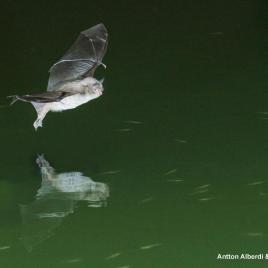
Some bats can diversify their diets with fish
Long-fingered bats that normally have an exclusively insect-based diet may catch fish in certain regions, a new study found. Researchers studied two groups of long-fingered bats – those known to catch fish and others that were exclusively insectivorous – to see their reactions to insect-like and fish-like prey. Although both groups could attack the fish-like […]
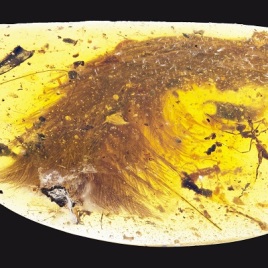
Feathered dinosaur tail discovered in a piece of amber 
Scientific discoveries often come from unexpected places – like a Myanmar amber market, which is where a researcher from Dexu Institute of Palaeontology found an item that offers unique insights into feather evolution in dinosaurs. Browsing through the goods of an amber vendor, researcher Lida Xing found what turned out to be a part of […]
New monitoring technique uses eDNA to learn about deepwater fish populations
Monitoring populations of polar and deepwater fish can be challenging due to their remote and often inaccessible habitats. A new study used a non-invasive analysis of environmental DNA in seawater samples to learn about several species of fish off the coast of Southwest Greenland. The researchers then compared eDNA analysis results to catch data by […]
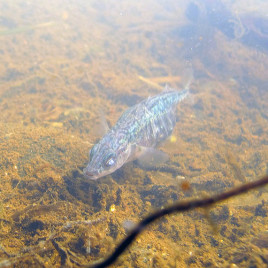
Rapid adaptive evolution of colour vision in threespine stickleback 
Colour vision can evolve to be better adapted to a particular environment in as little as 12,000 years. Authors of a new study out of UBC found that different populations of the threespine stickleback, a small fish that is able to live in fresh- or saltwater, have evolved to see different colours better depending on […]
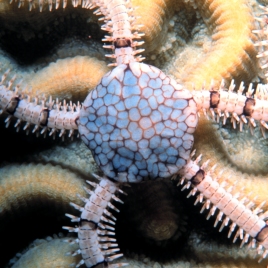
Deep-ocean biodiversity follows a different set of rules 
The diversity of life in the deep ocean is driven by the availability of food and not the temperature, as it is in shallower waters. Understanding biodiversity in the deep sea becomes increasingly important as species on the seafloor face pressure from deep-sea fishing and mining. A team of researchers from Canada and Australia analysed […]
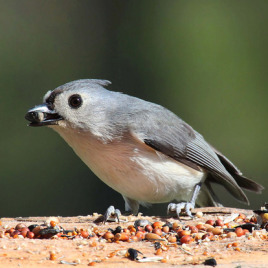
Tweet louder, I can’t hear you: Highway noise disrupts information transfer between bird species
Communication between birds is disrupted near major roadways, where the noise levels are unnaturally high. According to new research from University of Florida Institute of Food and Agricultural Sciences, this avian communication breakdown may help explain the pattern of reduced biodiversity near highways. Authors of the new study were curious about how building homes in […]
This is pretty crabby
Thousands of red crabs swarming in low-oxygen waters off the coast of Panama have been captured on video during a recent diving expedition. The crabs were identified by DNA as Pleuroncodes planipes, or Tuna Crabs, which have never been seen in waters so far south. The lead author, Jesús Pineda, said “when we dove down […]
Learning from the naked mole rat
When most mammals, including humans, are in a low-oxygen environment they begin to hyperventilate to increase their oxygen uptake. However this is an energetically costly way to increase oxygen levels in the body. The naked mole rat is unique from other mammals; when it is exposed to hypoxia (low oxygen levels) it does not begin […]
Conservations silver bullet
Removing invasive mammals has major benefits to an island ecosystem, according to a new study. As this type of conservation effort is expensive, researchers set out to understand the impact of this strategy. The benefits they saw “highlight the importance of this conservation measure for protecting the world’s most threatened species.” Original research paper published in the Proceedings of […]
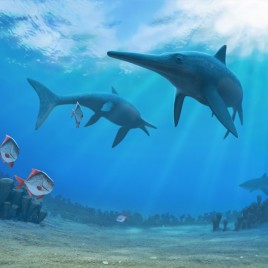
Solving the Disappearance of the Ichthyosaur
The Ichthyosaur, a dolphin-like reptile, ruled the oceans at the time of the dinosaurs, but then disappeared from the fossil record. Now new research seems to have figured out why. Their demise appears to be the result of climate change and a slow rate of evolution. Ichthyosaurs became extinct 90 million years ago, 28 million […]
Changing grasslands in North America
The productivity of grasslands in North America will increase in future climate scenarios, despite higher temperatures and increased drought, say researchers. They developed this forecast using a new model of the region’s hydrology and vegetation, incorporating data and images gathered from a network of cameras. The model showed an earlier start to the growing […]
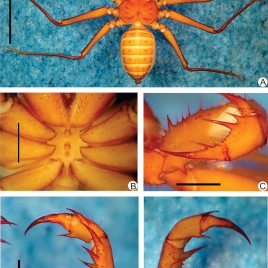
Newly discovered and already at risk
Eight new species of the Whip spider have been found in the Brazilian amazon, underscoring how little is known about biodiversity in this rainforest. However half of the newly discovered species’ habitat is threatened by human activity from dams and mining. Original research paper published in PLOS ONE on February 17, 2015. Names and affiliations of selected authors […]
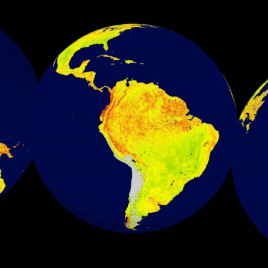
Mapping ecological sensitivity around the world
The areas of the world most sensitive to climate variation have been mapped by researchers. Using 14 years of satellite data researchers were able to develop the vegetation sensitivity index. The index is based on three variables that drive vegetation production – air temperature, water availability, and the degree of cloud cover. The researchers believe […]
When humans and Neanderthals met
Ancestors of modern humans and neanderthals may have interbred 100,000 years ago, earlier than previously thought, according to new genetic analysis. Additionally the gene-flow may have been two way, with each population breeding and receiving genes from the other. Researchers analysed the genomes of a Neanderthal (from the Altai mountains in Central Asia) and a […]